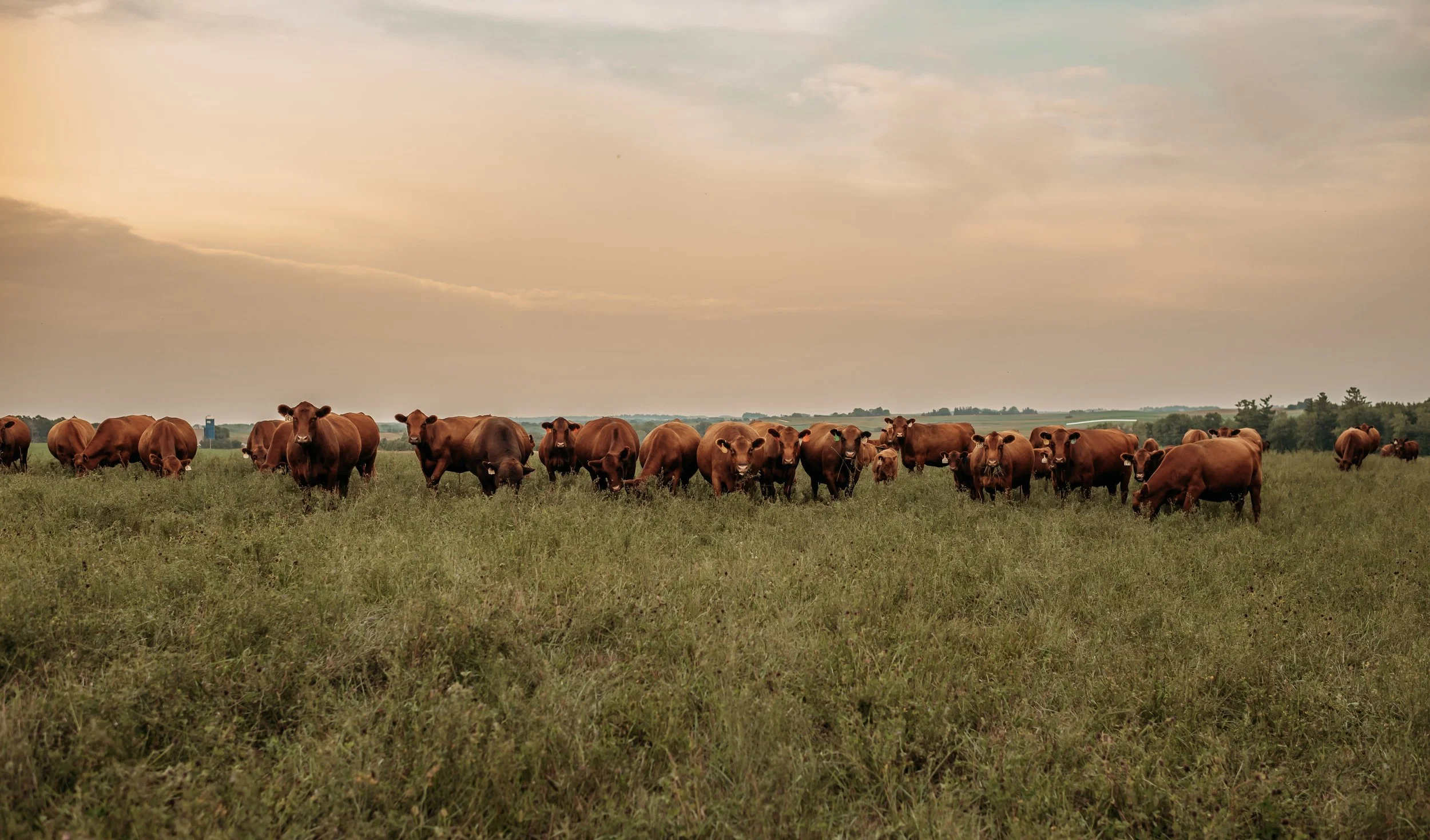Why do our farmers use rotational grazing?
One of the most popular questions we get when people visit the farm is “How often do you move the cattle?” and, “Why do you move them so often?” These are great questions, and they’re the ones we constantly evaluate as farmers because we know the significant impact these management decisions have on our grazing businesses. Before diving into the why, let's address the what. Our farmers practice rotational grazing. Just like it sounds, we rotate the cattle through our pastures, never letting them stay on any one piece of land for too long. Typically, we move cattle to a new area once per day, or every couple of days, depending on the situation and the impact it will have on the land. We utilize rotational grazing with turkeys, pigs and chickens, but we’re going to focus on cattle today.
The why of rotational grazing is a little bit more complex. We’re going to address it from two perspectives: why rotational grazing is better for the land and plants, and why it is better for the cattle.
Why Rotational Grazing is Better for the Land
First, we will address the land and plants. Plants are similar to humans in that they need rest. No, they don’t need 8 hours of beauty sleep every night, but they do need weeks or even months to recover, depending on the context of that particular pasture. When a cow grazes a plant, she typically eats the leaf, which is the solar panel and energy generator for the plant. Since the plant loses some or all of its solar panel during the grazing process, it takes nutrients from the roots to regrow new leaves.
If the cattle are not moved and the plant is not given time to recover and rebuild its nutrient reserve in the roots, the cattle will continue to consume that new vegetative leaf again. This will leave the plant with no leaf or root reserve and severely stunt the plant’s future growth. Meanwhile, other plants that may not be as desirable to the cattle may not be grazed and get mature to a point where cows no longer consume them. Once a plant goes into a reproductive stage most of its photosynthesis stops, which is the process in which plants store carbon from the atmosphere in the soil.
In short, when cattle are not rotated, you can have plants being overgrazed and stop growing and plants undergrazed and stop growing in the same field. Both of which leave the soil exposed to sun and heat, which can kill soil biology and rain which can erode soil. And when plants stop growing in either scenario, they stop photosynthesizing, which drastically reduces the carbon those plants can sequester and store in the soil. By rotating the cattle frequently, we keep plants green and growing all season long. This covers and protects the soil, captures carbon and pumps it into the soil, which is beneficial for the atmosphere and the soil since carbon feeds soil biology. Soil biology is what breaks down nutrients in the soil, making more nutrient dense plants for the cattle and therefore more nutrient dense meat for us.
Why Rotational Grazing is Better for the CATTLE
Rotational grazing is also advantageous to the cattle. When we use rotational grazing, we place large numbers of animals on small pastures for shorter periods. We call this an increased stocking rate. By increasing the stocking rate, cattle become less selective about what they eat and consume the more desirable plant species along with the less desirable plant species. This balances the diet similarly to a parent encouraging a toddler to eat their meat and vegetables and not only the sweets. Also, as explained earlier, when we do not rotate, the quality of the pasture goes down as the season goes on because desirable species are stunted and the others go into the reproductive stage and lose quality. By frequently rotating the cattle, we are essentially using cattle as a tool to prune the plants, keeping them in a high-quality, vegetative state throughout the summer so that the cattle are getting high quality feed.
We could share about rotational grazing and the impact we’ve seen it make on our land and cattle for hours, but for now we hope this brief overview helps you understand at least a portion of why we do what we do.
Do you have any other questions on our production and management decisions? We would love to answer those questions in future blogs! Just send an email to info@grassfedcattleco.com!





